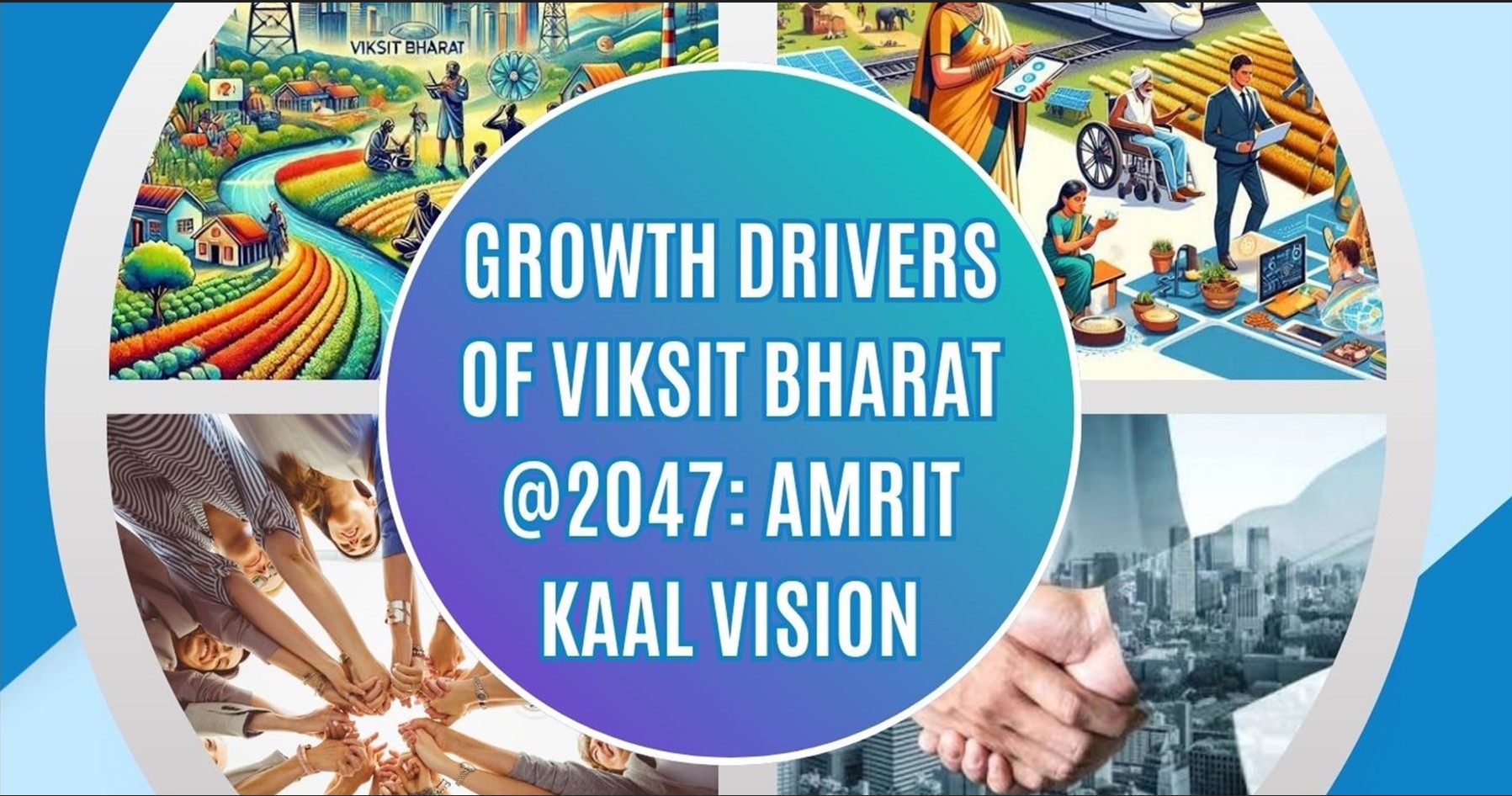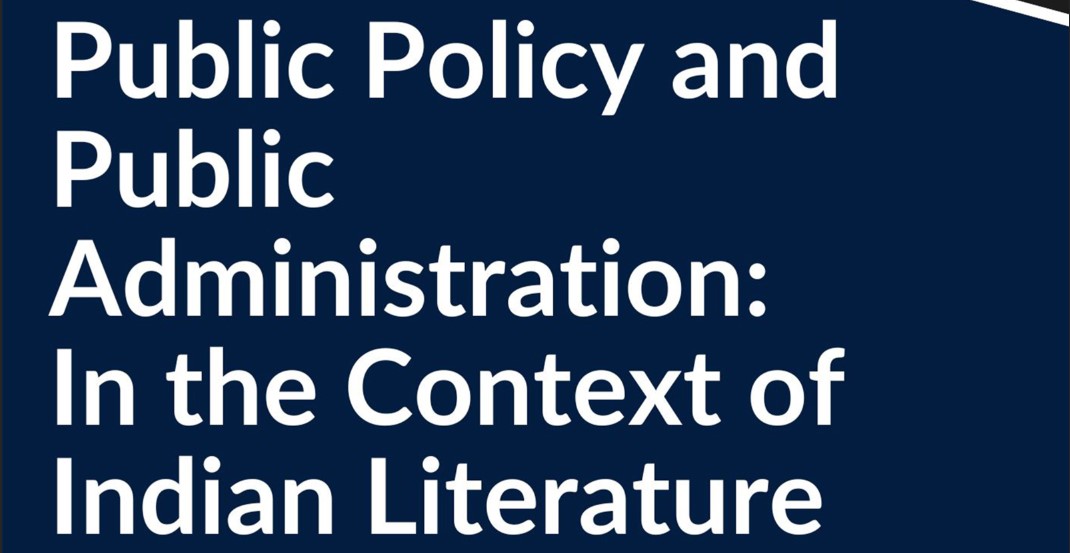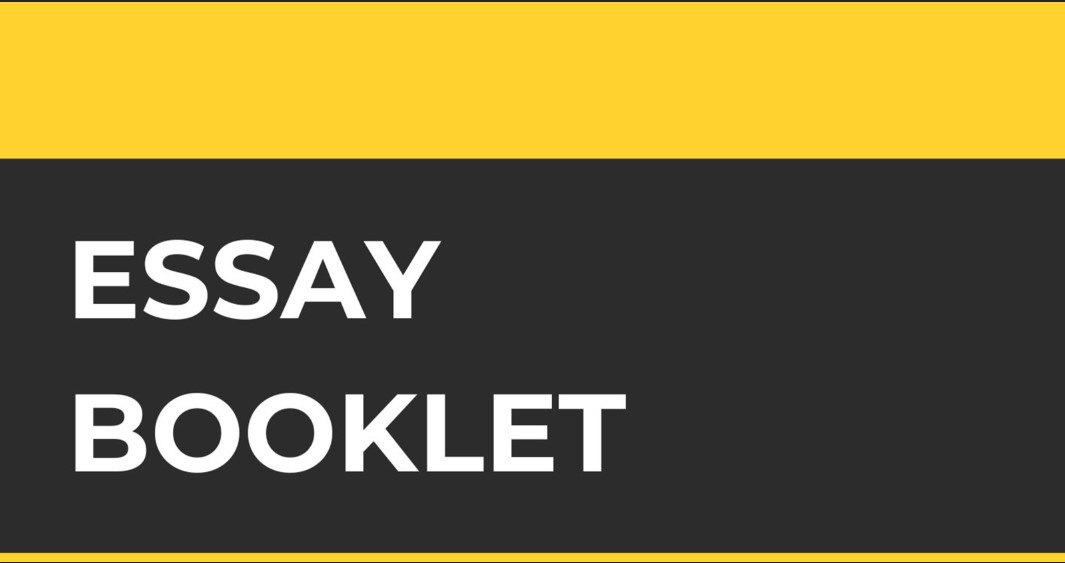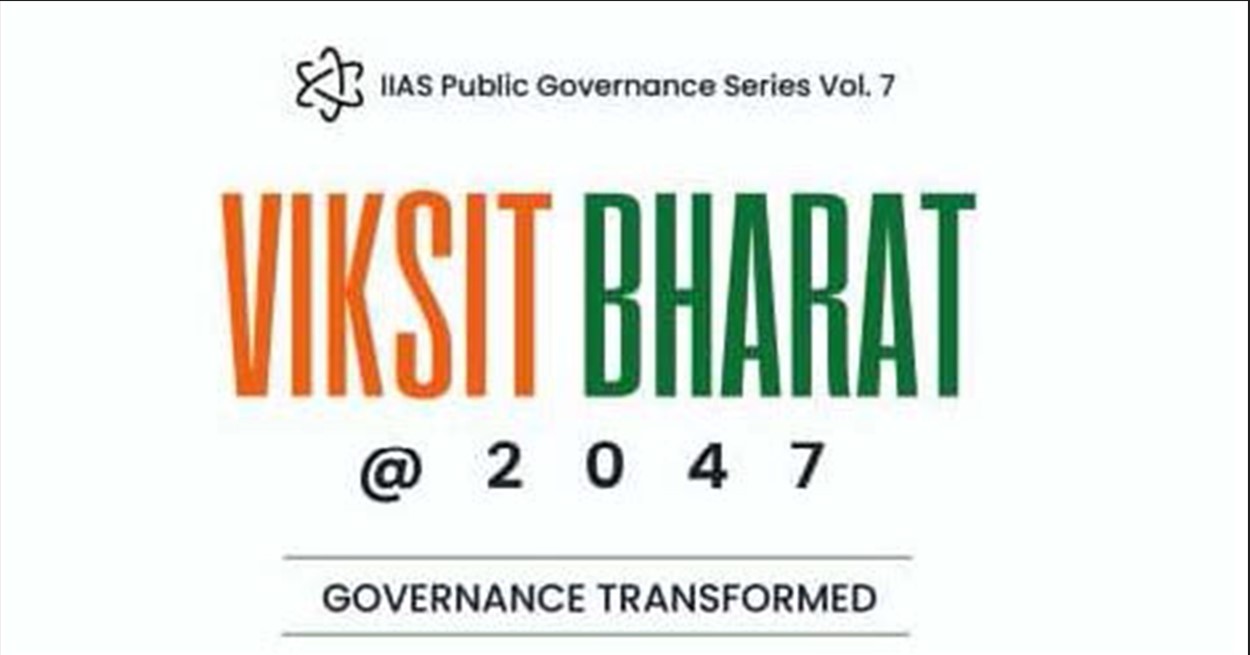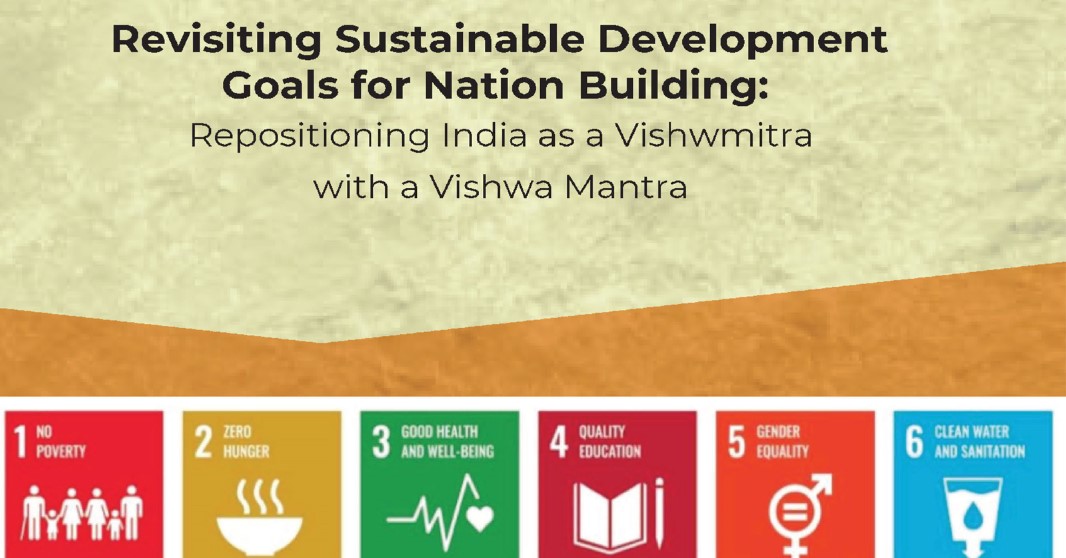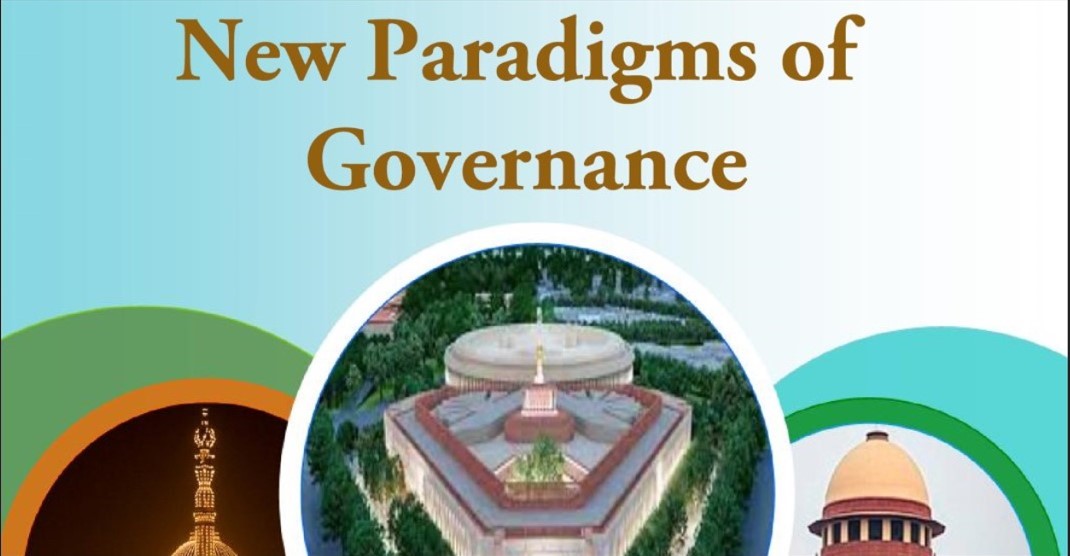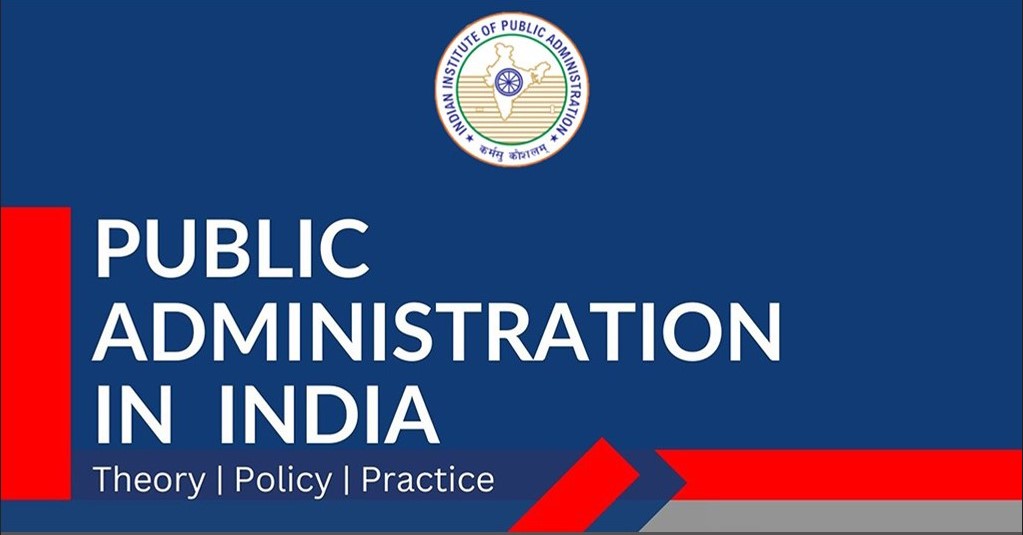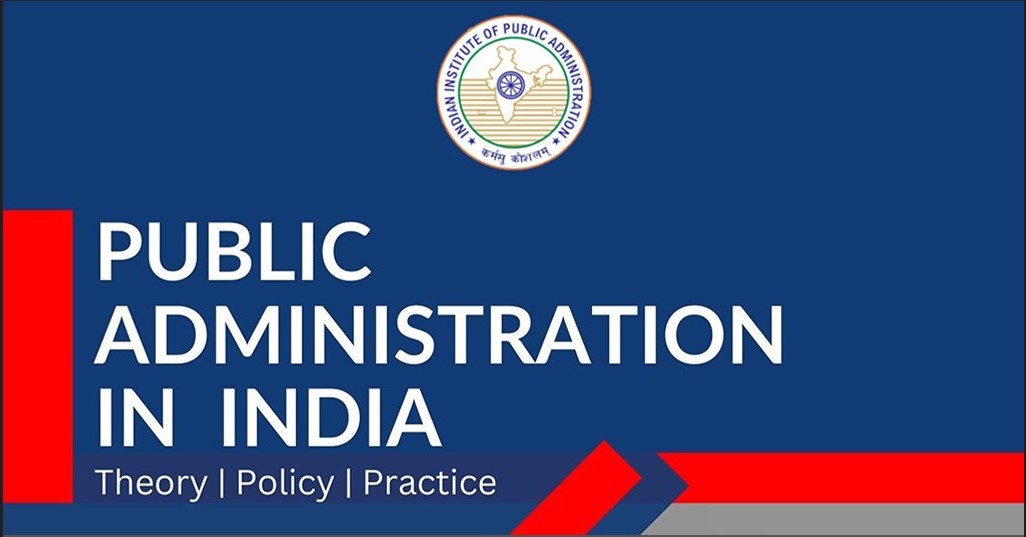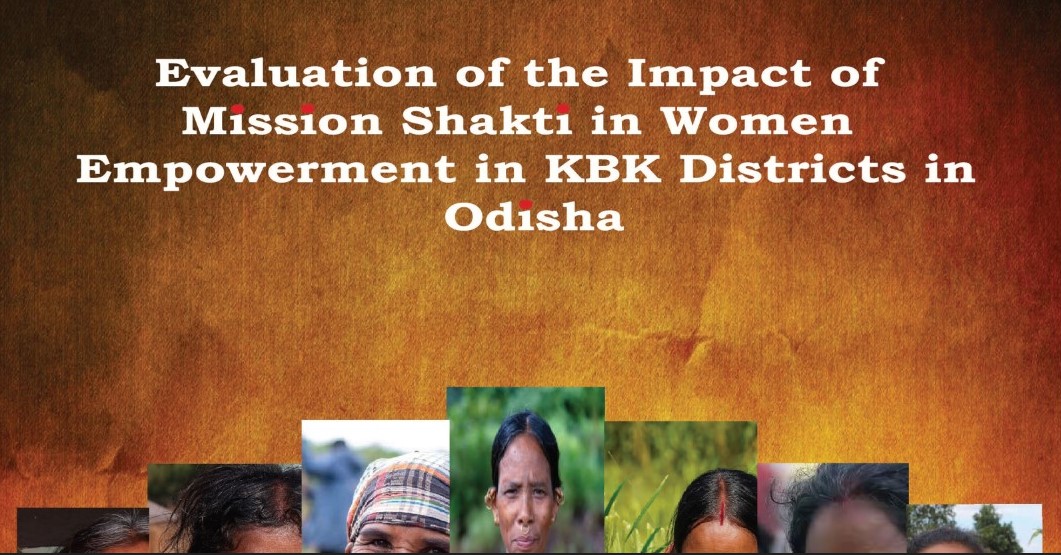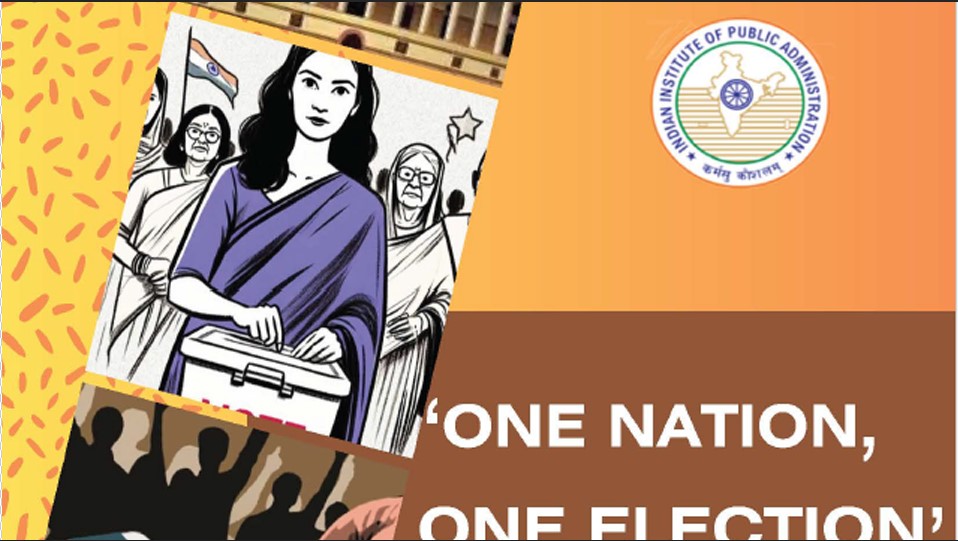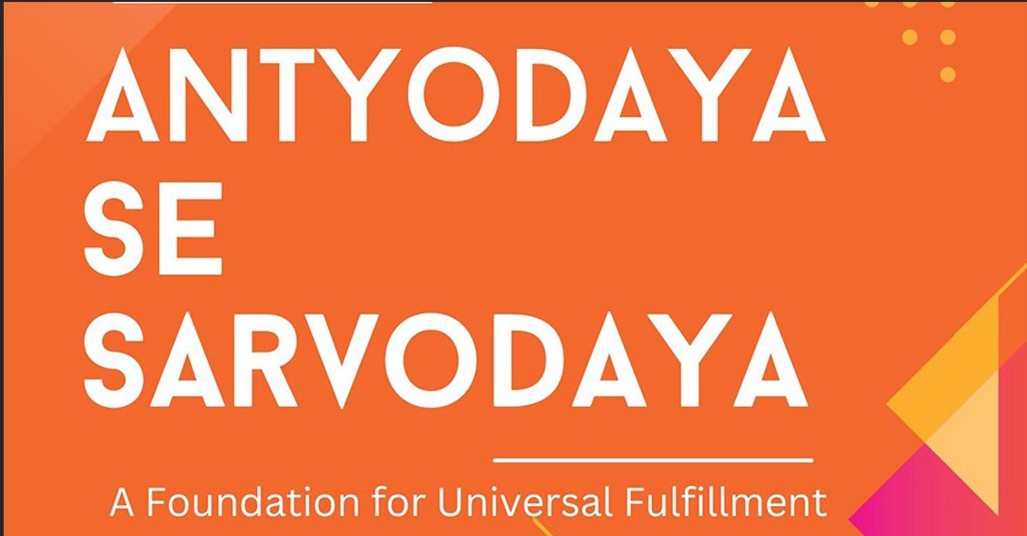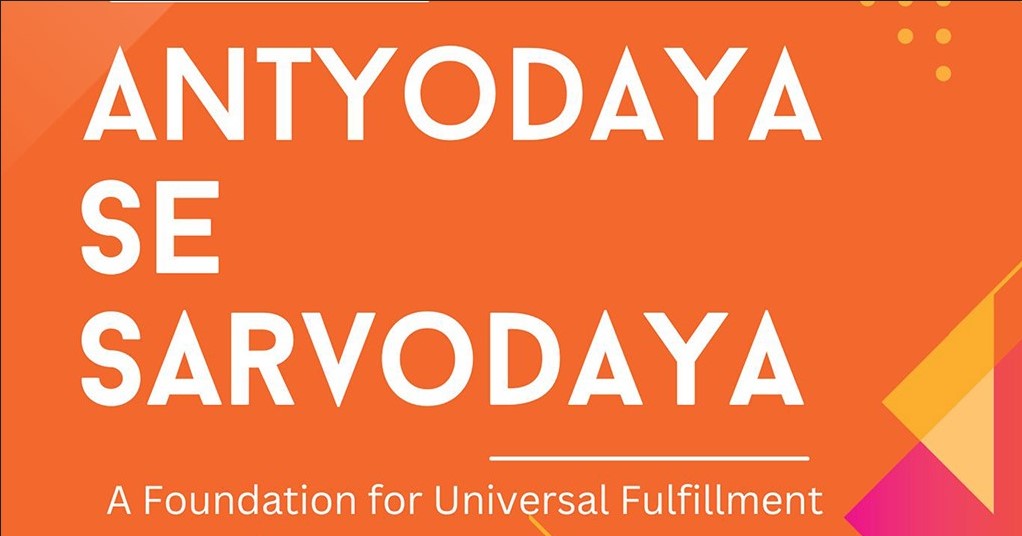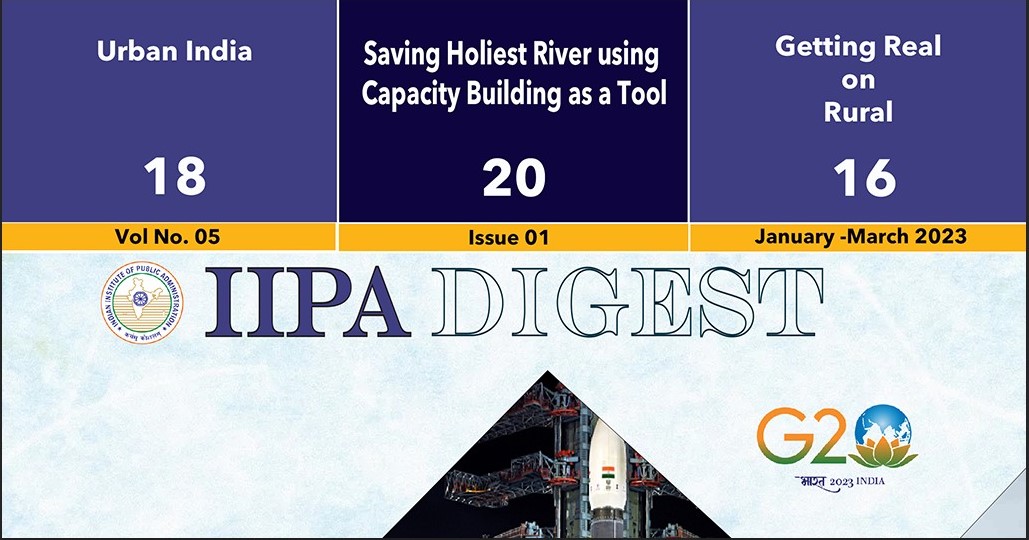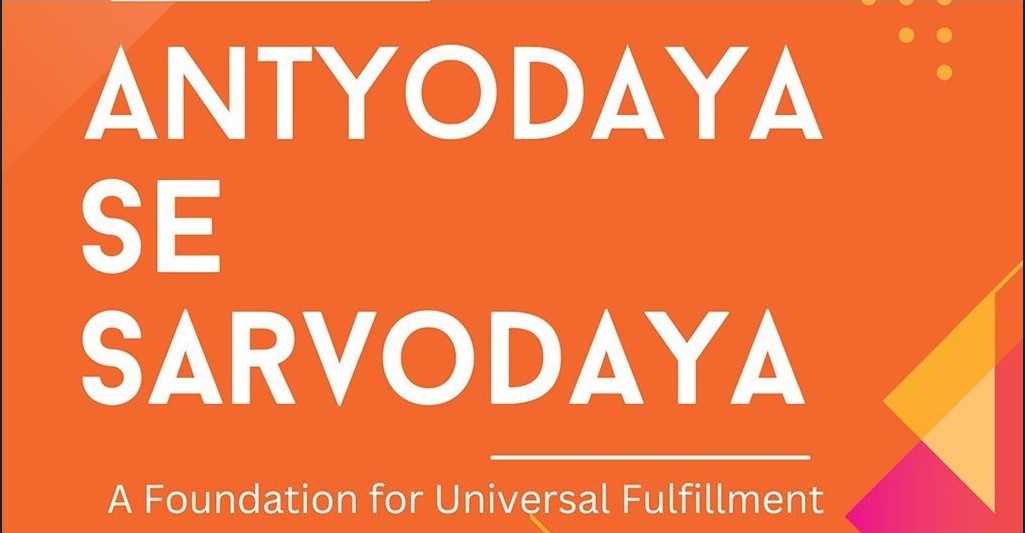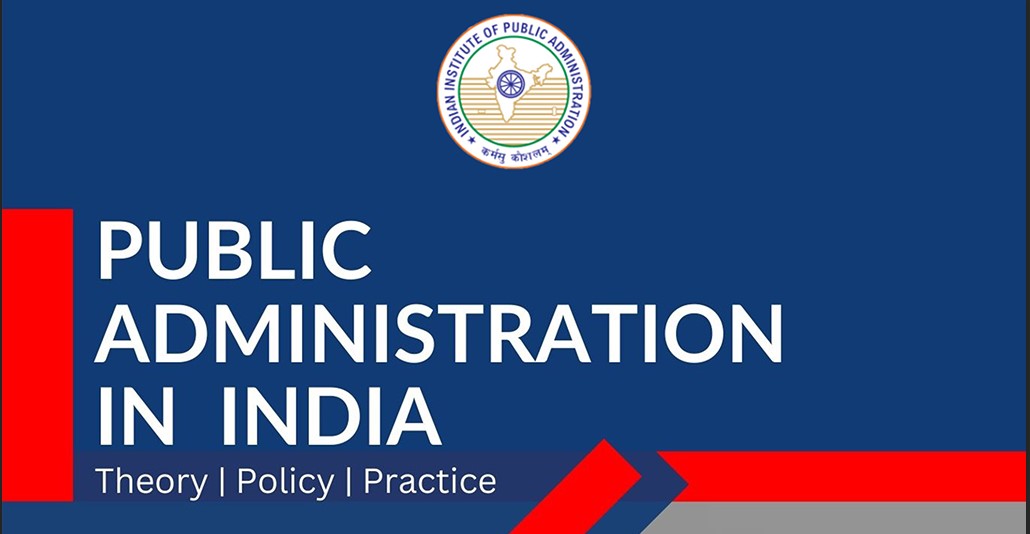Visionary Leadership in building Developed India: Need for Paradigm Shift in Approach to Development
Abstract
After independence in 1947, India adopted the approach of planned development through Five-Year Plans since 1951. First and Second Plans achieved great success, but subsequent Plans could not achieve the intended results due to various reasons. Economic situation kept on worsening, barring some years as an exception, until 1991. Since then, the adoption of almost-mandated economic reforms has led to a GDP growth rate in the range of 5% to 7%. If India plans to cross the bridge to be a developed country by the turn of this century, the target needs to be a double-digit growth rate along with a paradigm shift in the approach to development. Bharat needs to bring in the Third Phase of economic reforms which may be quite challenging, given the past 75 years legacy of appeasement of farmers’ lobby, socialistic mindset, ‘chalta hai’ (everything is ok) attitude, inefficient work culture, excessive democracy, ineffective judicial system, high corruption in the government, unquestionable powers to the ministers, public allergy to big industry, strong bias towards labour-intensive technology, non-consideration to the value of citizens’ time, etc. Most of these considerations were out of bounds for the Planning Commission as well as the NITI Aayog. Visionary leadership must address these issues with a paradigm shift to the approach towards development to achieve the goal of a developed India or Viksit Bharat by 2047 or beyond. This paper presents the framework for achieving the goal of Viksit Bharat@2047.
Key Words: Viksit Bharat, development, visionary leadership, developed country.
1. Introduction
Visionary leadership is essential for the rapid development of a country. Lee Kuan Yew’s visionary leadership from 1959 to 1990 as the first prime minister of Singapore transformed it from a low- income country with a per capita income of USD 428 transitions into a highly developed economy with a per capita income of about USD 90,000.
Vision, strategic thinking, and firm decision-making may be considered the key elements to success in the entire transformation process of a country, as was evident in Singapore’s success story. All countries have their history, social limitations or constraints, given geography, natural resources limits, technology capabilities, etc. What visionary leadership can and must do is to politically carve out a way to successfully navigate through all the existing realities and achieve all-around development, people’s happiness, and welfare. Several communist countries, barring exceptions like North Korea, achieved significant growth in human development index (HDI), per capita GDP, and infrastructure development, albeit in a harsh manner and a suffocating environment. On the other hand, countries like South Korea achieved a high level of economic development through visionary leadership under a multi-party democratic system of political governance. The differentiating background factors of different countries necessitate a differential policy framework for achieving economic development.
2. India’s Situation Analysis: 1947-2024
India, or Bharat, has had a rich civilization and a glorious history of thousands of years until about 1000 years ago. However, about eight centuries of invaders’ rule, followed by British colonization of Bharat, resulted in extreme poverty, low per capita income, and high illiteracy at the time of independence in 1947. Religious division of India led to new political dimensions in the new Bharat, which is continuing to remain the largest democratic country in the world. India started its process of economic development in a very systematic way through economic planning in 1951. The First Five-Year Plan (1951-56) was considered successful as it focused on all hitherto neglected sectors of the economy during the British rule, e.g., agriculture, irrigation, roads, railways, transportation, communication, shipping, industry, construction, health, education, and so on. The Second Five-Year Plan (1956-61) laid focus on heavy and key industries, which were meant to develop the base for India’s industrialization. Four Indian Institutes of Technology (IITs) and two Indian Institutes of Management (IIMs) were set up to produce competent technical and managerial manpower to ably manage large industrial enterprises under government control, known as Public Sector Undertakings (PSUs). Several agricultural universities were also established for needful research with the ultimate objective of bringing about foodgrains self-sufficiency in the country. The Second Plan was also considered a successful Plan. The methodology adopted in the Five-Year Plans (FYPs) continued to be based on sectoral input-output ratios and incremental output-capital ratios determining the sectoral financial allocation requirements for achieving the desired output targets and consequently the well-worked-out goal of a 5 per cent economic growth rate, i.e., growth rate of real GNP. Due to the Chinese aggression in 1962, soon followed by the Indo-Pakistan conflict of 1965, the sectoral financial allocations got derailed due to emergent defence-related priorities. Lack of investment during the Third FYP as well as subsequent 3-years plan holiday of 1966-69 led to the worst economic, social and political problems viz., high inflation, near-total educated unemployment except in the banking sector due to nationalization of major 14 scheduled commercial banks and their rapid branch-expansion policy to mobilize resources from the rural areas, balance of payments crisis leading to highest ever devaluation of INR (36%), shortages leading to black marketing, increasing corruption due to declining real income of the urban middle/upper-middle classes which comprised majority of government and public sector employees, growing public-dissatisfaction, and the resulting political challenge to the major political party viz., Indian National Congress (INC) which was the only ruling party in almost all provinces in the country as well as at the centre. Influx of about ten million refugees from East Pakistan during the army rule there during 1971 neutralized the green revolution gains of 1968-1971. After the December 1971 India-Pakistan war, which was won by India and marked by the emergence of Bangladesh, the greatest need of the country was to adopt sound economic policies to bring the national economy back on track.
Most unfortunately, the national political leadership and the union government neglected the economy and Indian economists’ recommendations during 1972 to mid-1975, i.e., the time when the Internal Emergency was clamped on the country. This three-and-half years period can be considered as the worst period of the Indian economy as this was characterized by extreme public unrest due to high national inflation, much higher urban inflation, rapidly growing educated unemployment as well as non-educated unemployment, power shortage, domestic power load-shedding of 12 hours per day, high industry power-cut upto 18 hours per day coinciding with workers’ strikes from work resulting in financial losses to industrial enterprises, shortages, total absence of investment climate etc. The first continuously ruling political party INC would not have faced any challenge in 1977 if it had performed well on the economic front. Unfortunately, the then political leadership's strategy to ‘remain in power’ adopted by the first and the longest ruling political party INC, proved to be non-visionary as it depended largely on appeasement of the ‘vote bank’ of poor masses comprising certain ‘lower castes’/tribes. This process continued till 1991, when the economy faced high external trade deficit and worst balance of payment crisis, necessitating introduction of ‘economic reforms’ under the pressure and advice of International Monetary Fund (IMF) which were termed as structural economic reforms related to ‘Liberalization, Privatization and Globalization’ (LPG) meant for bringing about the ‘market economy’ based economic system – departing from previous industry-regulator governance to industry-facilitator governance and ousting license-permit-quota system. These reforms of 1991, soon followed by the establishment of the World Trade Organization (WTO) in 1995, brought remarkable changes in the process of development during 1991-1996 and subsequent years under the leadership of different Prime Ministers (PMs), barring a few short-term PMs.
With a gap of interim governments at the centre during 1996-1998, the reforms were accelerated and were known as Phase-2 reforms and tackled several fundamental problems of the country, including the privatization of power (electricity) distribution, road expressways, etc. The 1990s and onwards period effectively enhanced the role of vote bank politics in different States. Electoral victory of a political party started depending on the extent of promised ‘freebees’ – including ‘writing off the farmers’ loans’ as was done by the INC government in 2009, just before the parliamentary elections. Due to alleged large-scale corruption in the union government, the electorate of the country brought a change in the governance by electing the National Democratic Alliance (NDA) to form the government at the centre under the leadership of Mr. Narendra Modi.
The initial model of FYPs ceased to yield any meaningful results from the Third FYP (1961-66) onwards. The relevance of planning through FYPs further declined after the LPG economic reforms were brought about in 1991 by the Narsimha Rao government (1991-96). Rightly, a bold decision was taken in 2015 by the union government to discontinue the system of FYPs as a tool of economic development. Planning Commission was replaced by a new body called National Institution for Transforming India (NITI) or Niti Aayog as a policy think tank for the government to provide policy inputs regarding different programs and policies of the government. The seven pillars of the NITI Aayog include pro-activity, pro-people, participation, empowerment, inclusion of all, equality, and transparency, and the key objectives of NITI Aayog are generic (NITI Aayog). Several useful sectoral and evaluation studies have been undertaken by Niti Aayog as a think tank for the government. The focus of economic policies of the government has been directed towards employment generation, GDP growth, income enhancement of the people in rural and agricultural sectors, all-around support to the urban poor, exports, economic stability, and so on.
Because of robust economic policies, despite a unified political opposition alliance in the national elections of 2019 and 2024, the NDA could win elections and form a government at the centre. Modi government’s achievements include its clean image and good performance of the economy as evidenced by a consistent about 6 to 7 per cent growth rate of GDP, which can be attributed largely to the prudent economic policies and other public policies, not to undermining the robust foreign policy. To come out of the pandemic shock of 2020-22 with the least damage was also a remarkable achievement of the national government.
The present Indian government has set the target of achieving a high growth rate of GDP so as to achieve the target of making India a developed country by the year 2047, i.e., when the nation completes 100 years of Independence from British rule. Is it possible to achieve this target in the remaining 22 years with the current economic policies, or is a paradigm shift in approach to development required? What considerations in visionary leadership are required for building a developed India or Viksit Bharat by 2047?
3. Dimensions of Development: Target Setting
India’s current per capita GDP is about USD 3000. If the economy grows at the prevailing about 6.5 per cent growth rate, the per capita GDP would almost quadruple and would attain the level of USD 12,000 by 2047. However, if the GDP growth rate of 10 per cent is achieved, the per capita GDP would grow to the level of USD 24,000 by 2047, which would be equivalent to current per capita GDP of Hungary, Poland, Greece etc. whereas reaching to the level of Korea, Japan and several central European countries may take another 10 years.
Development cannot be judged by only one indicator, i.e., per capita GDP. The United Nations Development Program (UNDP) measures development through the Human Development Index (HDI). The HDI of northern European and Scandinavian countries exceeds 0.9, whereas the central European countries are at the 0.85 HDI level. Few European countries have a bit lower HDI of about 0.80 as against India’s 0.64. Thus, India would need to achieve much higher life expectancy at birth as well as expected and mean years of schooling, apart from per capita GDP or Gross National Income (GNI). There are several other indices of development, and there can be many more such indices.
Earlier, economic development was considered an outcome of high per capita income, whereas all other indicators of development, e.g., literacy/education, per capita energy consumption, possession of high-value consumer durables, etc., were considered as associated with per capita income. However, after the introduction of HDI, another index, ‘happiness’ became an important parameter that is not necessarily related to per capita GDP. Bhutan, with a per capita GDP in the range of USD 3K to 4K, has been ranked as one of the happiest countries in the world, and a decade ago world’s happiest country. Thus, it is clear that high per capita GDP is not a prerequisite for happiness. Thus, the concept ‘development’ finds a deviation from ‘economic development’ as the desired objective of economic and public policy. What little meaning ‘economic development’ has when anyone on the roads is at risk of being looted, criminally assaulted, or abducted for a ransom, or any berserk citizen shoots any person dead due to personal fancy of dislike on account of race, colour, nationality, religious faith, etc., in a high per capita GDP country? Safety and security of people and their belongings, as well as the safety of children in schools, are extremely important for a society. Japan, Singapore, and Scandinavian countries stand very high on these parameters as compared to most other developed countries, such as the USA and many central and southern European countries. Thus, when we talk about development goals for India, we must also take into account several such parameters which are beyond total GDP or size of the economy and per capita GDP. Should we not think of Bharat as a developed nation in terms of economic, social and mental prosperity culminating towards Ram-Rajya where safety-security of the citizens, foreigners, their belongings, physical-mental health of people, feeling of fearlessness, lesser income inequalities, per capita GDP of poorest 10 to 20 per cent population, ethical standards, good governance with vision and wisdom etc.?
4. Towards Visionary Leadership with Out-of-Box Thinking
The most important public policy that the visionary leadership must bring is the elimination of unskilled or low-skill manual jobs and the use of technology for performing these tasks, such that the unskilled workers get replaced by skilled workers who can be paid higher salaries than the minimum wage rates. The supply-demand gap can be reduced as a very high supply of unskilled workers can be stopped, as this supply starts at the lowest eligible age for working. An appropriate use of technology would bring efficiency, enhance productivity, and necessitate learning of needed technology-led skills by the unskilled workers, which will, in turn, adversely impact the abundant supply of unskilled workers who always remain poor, and thus, the resulting skilled workers could be paid higher salaries. Further, this would raise the age at marriage as well as a higher duration of dependence of children on parents, which would result in controlling the population of the unskilled poor population as well as their unemployment. This would also result in crime reduction, rioting, etc., as the skilled employed youth would not indulge in senseless, unproductive activities at the cost of their professional career. Thus, the political and religious leaders will not find free helping hands for destructive purposes. The educated and technically skilled workers would need to keep learning newer skills to survive professionally. Thus, visionary leadership should develop policies towards the use of technology for converting unskilled job opportunities to skilled job opportunities.
It is known that the new disruptive technologies are taking away jobs, e.g., the photography sector jobs have almost been cut to zero after the camera became an additional feature in mobile phones. Motor mechanics will not be required in another 20 years when fuel-driven vehicles are replaced by battery-operated electric vehicles. Drivers will not be required once the driverless vehicles get operational on roads. Thus, education policy must be totally revamped with 100 per cent focus on technology, entrepreneurship, or other professional education at the college level, and thus, minimizing the most prevailing liberal arts education to very restrictive high high-quality academic level education only for teaching purposes, mostly as knowledge-enhancing compulsory courses and research. Young people are very creative, and entrepreneurship education at the college level will enable many youngsters to become successful entrepreneurs who would employ a large number of people in the emerging market scenario, e.g., Dunzo, Delhivery, DTDC, Blue Dart, Amazon, Flipkart, Big-Basket, Swiggy, Zomato, Blinkit, Cars24, MakeMyTrip, Yatra.com, etc. The German education system is worth studying as it highly focuses on technology education.
One most important aspects of a developed country is cleanliness in the cities and places of tourist attraction. When income level goes up, people like to spend on tourism and travel to new, attractive places which are clean, beggar-free, and offer good shopping and travel experience to tourists. London, Paris, Rome, Stockholm, Amsterdam, etc., are known for attracting tourists. Tourism enhances employment and income to an enormously high level. India has a large number of tourist attractions, but these have not been marketed well, particularly at an international level. This sector has extremely high potential for employment and income generation. Due to inherent problems of municipalities and Public Works Departments (PWDs) under government control, the road conditions and cleanliness have remained major issues to make living as well as tourist arrivals unattractive in India. These functions should be handled under the Public-Private Partnership (PPP) mode in order to attract international as well as domestic tourists. New tourist spots should be created as the Statue of Unity in Gujarat. Similarly, medical tourism has high growth potential in India, which can generate high income and employment when clubbed with general tourism. The visionary leadership should seriously focus on and prioritize these aspects through a focused policy. Even urban traffic management can be very effectively handled by the private sector or under the PPP mode.
The role of vote-bank politics or competitive populism is increasing in India due to rich electoral dividends reaped by smaller and/or regional political parties vis-à-vis the political interests of national-level parties. The current ‘opposition’ political parties’ alliance is based on pure opportunism. One major element of the vote-bank politics has been appeasement of the poor, erstwhile lower/backward castes and Muslims, the majority of whom have not yet started voting on the economic welfare and development agenda of the political parties, as revealed by the media analysts after each parliamentary election, as also several State elections. Islamic fundamentalists and radicals have exerted extremely high influence on Indian Muslim-voters who have been hitherto prevented from enlightenment and have been kept under myopic vision, and as a result, this community has remained largely uneducated, poverty-stricken, with a high total fertility rate under the garb of religion. Their voting pattern has continued to remain a major factor in Indian democratic politics and non-development. This factor needs to be considered with priority, with the involvement of enlightened members of this community who must work towards the real well-being of their community and emerge as well-meaning leaders.
Another factor for achieving development faster is based on the premise ‘money saved is money earned’, i.e., policy prescriptions intended to save ‘time’, which can be considered as the most important asset in any country. The government of India has sincerely followed the system of “non-trust” and “evidence-based” for preventing wrongdoings by the citizens. Such a system has neither succeeded in preventing corruption nor in eliminating wrongdoings; people are smart enough and capable of finding ways to do what they want to do, bypassing the regulations. Essentially, wrongdoers find out ways to do wrong things in the right way. The primary reference here is towards prevailing accounts and audit systems that are in place in India. Few examples would suffice to illustrate this point. To meet audit requirements, accounts department officials in organizations government as well as private require “receipts” of expenditure incurred on cycle ricksha, auto ricksha, petrol, medicines, food, etc., towards reimbursements of such expenditure. This entire exercise amounts sheer waste of time in “managing production of the bills” as required by the accounts section officials. Instead of this prevailing system, norms should be set to eliminate the requirement of the production of “bills” or “receipts” of expenditure incurred. The proposed new system would save precious professional working time and would bring about efficiency, and the time saved will be more productively utilized by all working people in different organizations. The value of time of citizens should be recognized by the government officials, who should be made accountable for making the common person run from pillar to post for petty tasks as required for the government system compliances.
A mindboggling number of applications, including those by highly over-qualified applicants, are seen for various advertised government jobs in group C and D. The reason for such a phenomenon is quite obvious, viz., enhanced income through unnoticed or uncaught corruption and job security without corresponding accountability. This is a ubiquitous truth that the higher the unearned income potential in a job, the higher would be the demand for such jobs and the consequent prevailing corruption in the recruitment and selection of incumbents for such positions. This process can be reversed through suitable management techniques, enabling heavy reverse penalties on government officials based on a well-crafted work audit system for them. It is also a well-known fact that the corruption money is always directly proportional to the deviation from the regulatory norms. Thus, the regulatory norms should be revised for easy compliance, and the power of government officials should be diluted along with a reduction in their numbers, if we wish to achieve the status of a developed country @ 2047. If the government officials become encouraging and positive towards entrepreneurs, the unemployment problem of the country can be solved in no time, and the target of a 14 per cent GDP growth rate can be achieved.
The Indian legal system is considered a farce due to the inordinate delays in court decisions in civil cases and a several-decades-long period in filing a chargesheet in criminal cases. Corruption-free courts must deliver decisions in a time-bound manner, like those in most developed countries. In addition, the legal costs, including the time-cost (value of time of judges), must be recoverable from the guilty so as to discourage avoidable litigation. The outdated penalties of the early British era (1960) should be revised, and the jurisprudence system should be revamped to make it contextual with the times. The judicial system should be scary to potential criminals and to those attempting to make a fool of the soft legal system through abuse. The hollowness of the Indian legal system is evident by the fact that there are over 50 million cases in Indian courts.
The taxation system also needs to be rationalized. Agricultural income was kept non-taxable at the time of Independence due to then valid reasons. But, with the changed circumstances, there is every logic to tax (rich) farmers at par with other professionals in the country.
The election system also needs reforms. Bribing the voters soon before the elections directly or through “election promises of assured financial dole or similar benefits if voted to power” needs to be declared illegal, being a sort of criminal offence of ‘bribing’. There is a need to re-examine the reservation system in jobs, as continuously ignoring this may become explosive sometime in the future. Developed countries don’t function based on 70 to 80 per cent reservations in government jobs. Some states have 70+ per cent job reservation, and transfer of reserved category higher merit people to the general pool leads to an effective reservation of 85+ per cent. Contrarily, 50 per cent seats in jobs or any other competition should be reserved for pure merit-based applicants to start with.
5. Conclusion
For achieving the target of Viksit Bharat @ 2047, a special Task Force of Niti Aayog needs to be constituted with clear objective of crafting the strategy for achieving the objective of truly converting Bharat into a developed nation with not only per capita GDP exceeding USD 25,000, but also converting Bharat into a nation with virtues such as crime-free, beggar-free, clean, healthy, happy, ethical etc., i.e. other nations with still higher per capita GDP would always envy. Some aspects not an exhaustive list of out-of-box thinking, as elaborated above, that would bring radical changes in Bharat can be summarized as follows:
• It is important to analyse ‘why the poor are poor’. It is not difficult to understand that the poor people are those who engage in unskilled jobs in the unorganized sector. Thus, replacement of unskilled jobs by more remunerative high skill jobs will minimize low low-wage working population to a negligible level. There is a dire need to plan future occupational structure with a focus on high-skill intellectual and green jobs, largely in the services sector. Low-skilled manual jobs need to be eliminated. Further, begging should be banned in a real sense, and not only through legislation.
• Fundamental reform in the education system to make it completely focused on technology, management, entrepreneurship, and professional careers in all relevant fields. Secondary level education must be made compulsory through the formal schooling system. Focus on academic R&D should be increased, and instead of just boasting about the number of patent applications filed, the revenue generation through the commercialization of patents should be recognized.
• Tourism promotion for employment and income generation through developing more tourist attractions and beautification of cities, and making cities very clean and beggar-free. In addition, developing all required infrastructure for handling 10 times, 100 times, or 1000 times more tourists, both international as well as domestic. Such infrastructure and facilities would attract national and international tourists, leading to phenomenally high employment generation and GDP growth.
• As the municipalities under government control, due to their inherent problems, cannot handle basic municipal functions of urban cleanliness and maintenance of civic facilities, including proper pothole-free roads, the municipalities should be made functional under the PPP mode, which could be considered feasible for PWD’s road maintenance function and road traffic management as well. Traffic mismanagement and poor road conditions resulted in 1.7 lakh road-accident-deaths in 2023. Claims due to poorly maintained roads should be recoverable from the municipality officials and traffic police officials responsible for negligence for the injuries and deaths. It is high time to close public sector enterprises wherever private sector enterprises can work under a due governance system. The government should perform the role of governance instead of doing business. To make health and educational institutions more efficient, the PPP mode of their functioning may also be considered. Lesser ‘power’ should be enjoyed by the government officials as corruption is directly proportional to power.
• Major election reforms should be brought in with a zero tolerance policy towards political financial-promise bribery meant for appeasing economically poor voters. This would enable the incumbent government to formulate prudent and sound economic policies for Viksit Bharat @ 2047.
• Enlightened members of majorly inflexible radical members led communities should be motivated to take up specially created responsible positions for maintaining peace and harmony in the country.
• ‘Citizens’ Time’ being one of the most important resources, overriding policies should be formulated to shun the traditional system of each time proving oneself right with documentary evidence. As everyone’s interest is of highest priority, the efficiency in official work gets compromised in the process of producing petty evidence. All procedures causing inefficiencies and leading to delays should be reviewed and rationalized.
• All government employees should be subject to their ‘role-audit’ and a reverse penalty system should be evolved to make them perform their duty with the Viksit Bharat @ 2047 objective and play a positive role in nation building. This would automatically discourage citizens from taking up government jobs, which have hitherto been attractive because of the extremely high scope of converting ‘potential power’ to ‘money’. The entrepreneurs and corporate sector enterprises need to be incentivised for their contribution towards tax revenue, GDP growth, employment generation, foreign exchange earnings, better functioning of the economy, etc. If various hurdles to entrepreneurship and industry are removed and government officials show a positive attitude to entrepreneurs, it would not be difficult to achieve a 14% GDP growth rate.
• All types of discriminatory practices should be done away with. For example, non-taxation of agricultural income, and different types of continued reservations after the entry level. At least 50 per cent of jobs should be reserved for open entry based purely on merit from all categories of applicants, e.g., Sc, ST, OBC, PH, Departmental (children of employees), General, etc.
• Criminal laws should be thoroughly reviewed to make penalties deterrent to potential and future criminals. Delay of several decades in judicial decisions should be curbed through bringing suitable legal reforms, as ‘justice delayed is justice denied’. The judiciary needs to find out solution to deliver justice to the litigating people, as there are about 50 million pending cases in Indian courts. The legal system should include speedy justice and recovery of costs from the culprits. Legal reforms should include the system of incorporating the value of time in the penalties. The jurisprudence systems should be reviewed, and the penalties should not be as per the 1860 Act, as financial penalties then and now are incomparable. All types of protestors, rioters, and system disruptors must pay for the damages caused by them.
• Safety and security of foreigners, and their belongings should be dealt with more stringently, as this involves the nation’s prestige and has great international relations-oriented repercussions apart from a great adverse impact on tourist arrivals and associated benefits to the economy.
• The physical and mental health of people is important and needs to be given due attention in public policy prescriptions. Adoption of a uniform civil code for all citizens would bring about social harmony.
• Lessons need to be derived from the Environmental Kuznets Curve, and we should focus on reduction in carbon emissions in the long run, i.e., after achieving the status of a developed nation.
• More even distribution of income should be targeted in the long run, i.e., after ensuring provision of a basic, good-quality living to all people. However, policies to increase the income of the poorest 10 per cent population should be prioritized in the government policy.
With the above out-of-box thinking-based suggestions, a paradigm shift in the approach to development is recommended. High per capita income will help in the elimination of centuries-old inferiority complex inflicted during the British rule. Rapid growth of the private corporate sector would result in high profits and consequent high tax revenue for the government, which can be utilized for financing the schemes meant to benefit the poor, as well as for stronger national defence and early achievement of the goal of Viksit Bharat @ 2047.
References
1. ADB (2024), Asian Development Outlook, Asian Development Bank.
2. Banerjee, Abhijit and Duflo, Esther (2011). Poor Economics: a radical rethinking of the way to fight global poverty, New York: Public Affairs
3. Becker, Gary (1960). An Economic Analysis of Fertility, in Demographic and Economic Change, Princeton, NJ: NBER/ Princeton University Press.
4. Becker, Gary (1964). Human Capital, New York: Columbia University Press.
5. Becker, Gary (1965). A Theory of the Allocation of Time, Economic Journal, LXXV (N299): 493-508
6. IMF (2024), World Economic Outlook: Policy Pivot, Rising Threats, International Monetary Fund
7. IMF (2024), World Economic Outlook: The Global Economy in a Sticky Spot, International Monetary Fund
8. Miletzki, Janna and Nick Broten (2017), An Analysis of Amartya Sen's “Development as Freedom”, London: Taylor & Francis
9. NITI (2023), National Multidimensional Poverty Index, NITI Aayog (NITI Aayog: http://www.niti.gov.in).
10. Sen, Amartya (1999), Development as Freedom, New York: Oxford University Press.
11. World Bank (2024), Global Economic Prospects, World Bank Group.
12. World Bank (2024), World Development Report, World Bank Group.
Leave a comment
More articles from Governance & Polity




